Salak, more commonly known as snake fruit, is an exotic tropical fruit cherished for its scaly reddish-brown skin, distinctive sweet-sour taste, and crunchy texture. Indigenous to Southeast Asia, salak has long been a staple in regional diets and traditional medicine. Its nickname “snake fruit” comes from the unique, snake-like appearance of its skin — but beyond its outer look lies a juicy fruit that’s increasingly finding fans worldwide.
As global curiosity grows around lesser-known tropical fruits, a question arises: Which country is the largest salak (snake fruit) producer globally? The definitive answer is Indonesia, the birthplace of this fascinating fruit and the undisputed leader in its production, both in quantity and diversity.
In this article, we’ll explore the reasons behind Indonesia’s dominance, other significant producers, the characteristics of salak cultivation, and its growing relevance in global trade and nutrition.
Introduction to Salak (Snake Fruit)
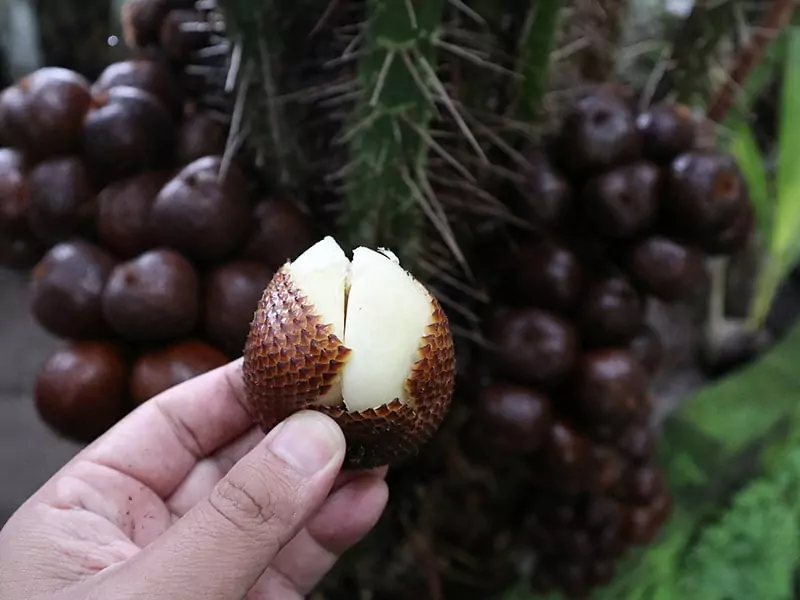
Salak belongs to the palm family (Arecaceae) and grows in clusters at the base of short-stemmed, thorny palm trees. The most widely cultivated species are Salacca zalacca and Salacca wallichiana, with numerous regional cultivars differing in flavor, texture, and shape.
The fruit is typically 2–4 inches long, with a shiny, scaly exterior and 1–3 lobes of pale-yellow to reddish-white flesh inside. Its taste can range from honey-sweet to tangy and is often described as a mix between apple, banana, and pineapple. Salak is not only enjoyed fresh but is also used in salads, syrups, chips, and fermented beverages.
Rich in potassium, fiber, vitamin C, and antioxidants, salak has gained attention as a functional food with numerous health benefits.
Indonesia: The Largest Producer of Salak Globally
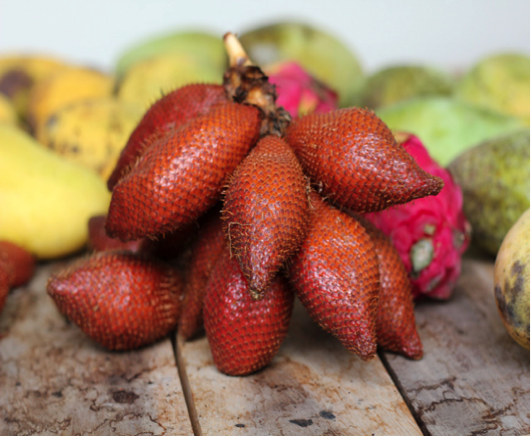
1. Origin and Cultural Significance
Indonesia is the native home of salak, where it has been cultivated for centuries, especially on the islands of Java, Sumatra, Bali, and Sulawesi. The country produces over 80% of the global salak supply, making it by far the largest producer and exporter of snake fruit in the world.
Salak is deeply embedded in Indonesian culture. It is a common household fruit, served at traditional ceremonies, local markets, and street food stalls. The country is also known for its diverse range of salak varieties, many of which are unique to specific regions.
2. Leading Varieties in Indonesia
Some of the most famous Indonesian salak varieties include:
- Salak Pondoh (from Yogyakarta) – Sweet, low-acid, and highly aromatic. It’s the most commercially cultivated variety and widely exported.
- Salak Bali (from Bali) – Crisp texture with a balance of sweet and tangy flavors. Also popular among tourists and used in agro-tourism.
- Salak Gula Pasir – A rare cultivar from Bali, known for its sugary taste and small seed size. Often used in traditional Balinese desserts.
Each variety is adapted to local soil and climate, making Indonesia a genetic treasure trove for salak development and research.
3. Production Scale and Output
Indonesia produces more than 1 million metric tons of salak annually, with Java alone contributing over 60% of the country’s total output. The central and eastern Java provinces such as Yogyakarta, Sleman, Magelang, and Banyumas are major production hubs.
Factors supporting Indonesia’s production dominance include:
- Ideal tropical climate with well-drained, volcanic soils.
- Year-round growing seasons, allowing multiple harvests.
- Widespread smallholder farming systems.
- Strong local and regional market demand.
The government also supports salak as a key horticultural commodity, promoting organic farming, agro-tourism, and value-added processing.
Other Salak-Producing Countries
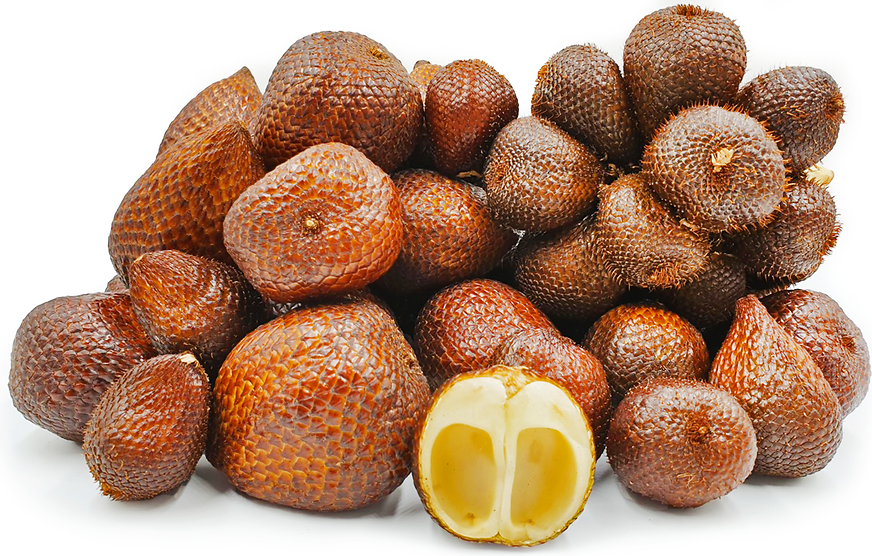
While Indonesia leads the world in salak production, other Southeast Asian nations also play important roles, though at smaller scales.
1. Thailand
Thailand is a significant secondary producer of snake fruit, particularly the species Salacca wallichiana. The fruit is grown in southern regions such as Chanthaburi, Rayong, and Trat, and is often consumed domestically.
Thai salak tends to be more acidic and juicy compared to the Indonesian types. It is commonly used in spicy salads (yum salak), pickled preparations, and processed into dried snacks.
Thailand exports limited quantities of salak, mainly to niche markets in Malaysia, Singapore, and Hong Kong.
2. Malaysia
Salak is cultivated in Perak, Johor, and Pahang in Malaysia. While production is not on the scale of Indonesia or Thailand, the country has made strides in developing local cultivars such as Salak Jambi and Salak Kuala Kangsar.
Malaysia’s snake fruit is primarily sold in local fresh markets, with growing interest in processing salak into snack products, jams, and health foods. There are also efforts to promote salak as an agro-tourism attraction.
3. Philippines and Vietnam
The Philippines and Vietnam grow salak on a very limited scale, mostly in home gardens or as part of mixed agroforestry systems. The fruit is not widely commercialized, though experimental plantations exist in parts of Mindanao and the Mekong Delta.
Efforts to cultivate salak more commercially in these countries are in early developmental stages.
Why Indonesia Dominates the Global Salak Market

1. Natural Biodiversity
Indonesia’s geography, with its volcanic soil, humid climate, and ample rainfall, provides the perfect environment for salak to thrive. The country also harbors the greatest genetic diversity of salak species and cultivars, giving it a natural competitive edge.
2. Agroecological Zoning and Farming Knowledge
Generations of farmers have honed the techniques of salak cultivation, propagation, and pest control. Many farms still use traditional organic practices, reducing reliance on chemicals and producing fruit that appeals to modern health-conscious markets.
The concept of “Desa Wisata Salak” (Salak Tourism Villages), such as those in Sleman and Bali, further integrates farming with local economy and tourism.
3. Domestic and Regional Demand
Indonesia has a population of over 270 million, and salak is a common household fruit. With high domestic consumption, local producers are guaranteed a stable market, which reduces export dependency and encourages scale.
During festivals like Ramadan and Idul Fitri, demand for salak spikes, driving higher prices and benefiting local farmers.
4. Government and Private Sector Support
Indonesia’s Ministry of Agriculture has included salak in its horticultural development programs, providing support in:
- Crop improvement.
- Farmer training and certification.
- Export facilitation.
- Infrastructure development (e.g., rural roads, packaging centers).
There are also private sector investments in processing facilities that convert fresh salak into products like chips, juice, vinegar, wine, and candied fruit, boosting its economic value.
The Export Potential of Salak
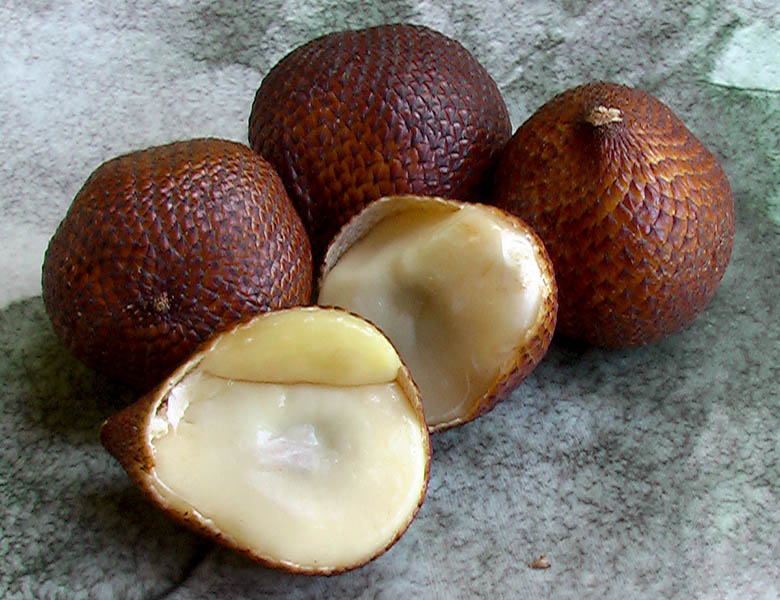
Although Indonesia currently exports only a small percentage of its total salak production, the international market is rapidly expanding.
Key export destinations include:
- Singapore
- Malaysia
- United Arab Emirates
- Hong Kong
- Netherlands and Germany (via specialty importers)
With increasing global interest in exotic fruits and superfoods, salak is positioned to become a more mainstream fruit in the global produce market. Improvements in cold storage, transportation, and branding will help tap into wider markets in Europe, North America, and Japan.
Challenges Facing the Salak Industry
Despite its success, the salak industry in Indonesia and other countries faces several challenges:
- Post-harvest losses due to poor storage.
- Limited shelf life, making export logistics difficult.
- Lack of standardized grading and quality control.
- Low consumer awareness outside Southeast Asia.
- Thorny trees and labor-intensive harvesting, limiting mechanization.
Addressing these issues will require investment in research, extension services, and international marketing strategies.
Conclusion
Indonesia holds the well-earned title of the largest salak (snake fruit) producer globally, with unmatched genetic diversity, favorable climate, deep-rooted cultural practices, and strong market demand. With over 1 million metric tons produced each year and a growing domestic and international market, the country leads not only in quantity but also in innovation and cultivar development.
As the world turns toward healthier diets and exotic fruit trends, salak has the potential to become a global superfruit — and Indonesia is well positioned to lead this transformation.
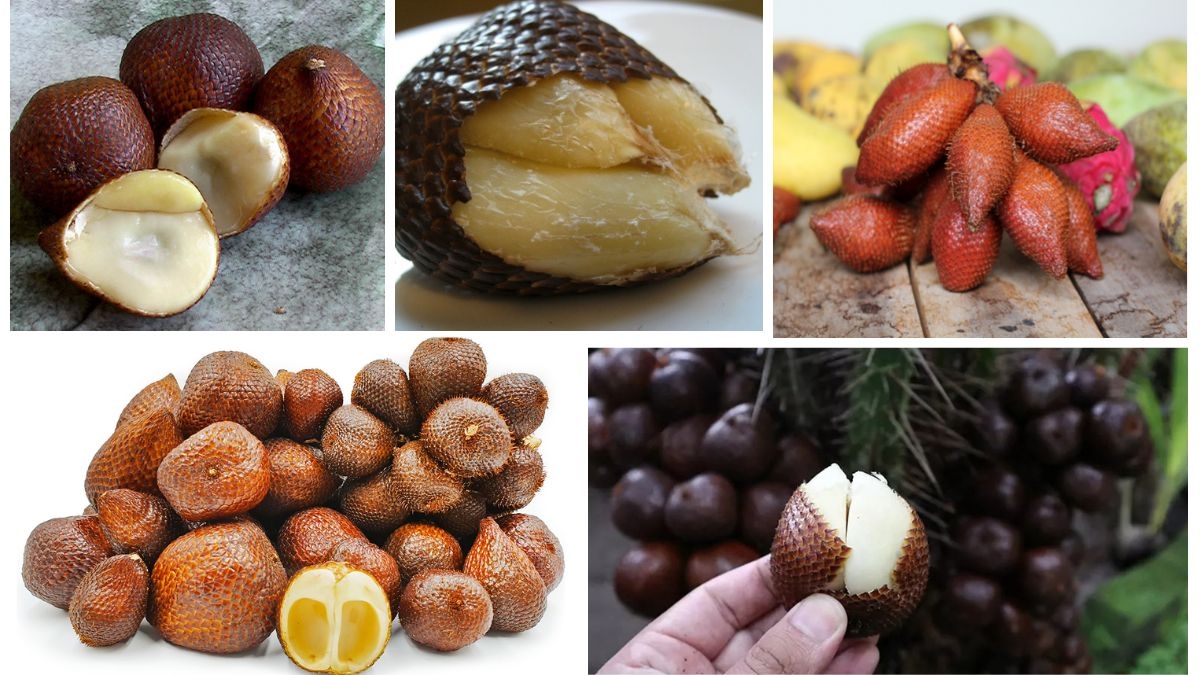

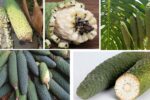
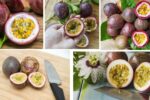
Leave A Comment